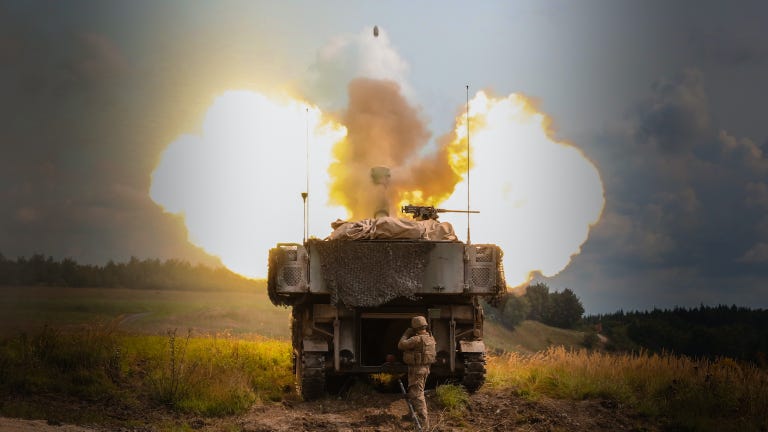El Jefe de Estado Mayor del Ejército de los EEUU, El General Mark Milley, le dijo al Congreso que podría desplegar armas hipersónicas operativas para 2022. El Ejército y la Armada , están en proceso de mejorar los cañones grandes existentes con proyectiles de hipervelocidad. Un innovador sistema llamado Hyper Velocity Projectile permitiría que los obuses pesados del Ejército y las armas de cubierta de la Armada disparen proyectiles que puedan derribar los misiles balísticos.
 Faced with a growing number of missile threats, the Pentagon is looking to the U.S. Army’s field artillery to shoot down those incoming threats. An innovative system called the Hyper Velocity Projectile would allow the Army’s heavy howitzers and the Navy’s deck guns to fire projectiles that can down incoming ballistic missiles.
Faced with a growing number of missile threats, the Pentagon is looking to the U.S. Army’s field artillery to shoot down those incoming threats. An innovative system called the Hyper Velocity Projectile would allow the Army’s heavy howitzers and the Navy’s deck guns to fire projectiles that can down incoming ballistic missiles.
The U.S. military has a two-sided missile problem. America’s potential adversaries field large numbers of ballistic missiles, such as the Chinese DF-21, Russian Iskander-M, and the North Korean Nodong, all of which are a serious threat to both ground and sea-based U.S. forces. Iskander missiles could attack U.S. Army formations in wartime, devastating headquarters and supply units, while the DF-21 is a threat to U.S. aircraft carriers and other large ships.
The Pentagon has defenses to counter these weapons, but they are expensive. The American THAAD, Standard, and Patriot PAC-3 MSE missiles can defend U.S. forces on the ground and at sea, but cost upwards of $2 million each. They’re often more expensive than the missiles they are designed to shoot down. Besides, no interceptor has a 100 percent reliability rate, forcing defending U.S. forces to allocate several of them per target. A single missile intercept gets very expensive very fast.
Help is now coming from an unlikely place. The U.S. Army’s M109A6 Paladin and M777 155-millimeter howitzers are designed to lob high explosive, smoke, and other projectiles up to 18 miles. Someone in the Pentagon’s Strategic Capabilities Office took a look at those howitzers and decided they would make great vehicles for a Hyper Velocity Projectile (HVP). Traveling at 5,600 miles an hour, the projectiles could intercept incoming ballistic missile warheads at a projected $86,000 per shot.
HVP could become a Navy program as well. Each U.S. Navy cruiser and destroyer has a 5-inch (127-millimeter) gun that could become a HVP platform. The Navy is hunting for a round to replace the canceled long range land attack projectile designed for the Zumwalt-class destroyer’s 155-millimeter Advanced Gun System. Although HVP won’t have the range of the cancelled round, it will be more versatile.
Fuente: https://www.popularmechanics.com


